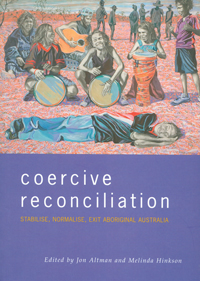
Coercive reconciliation: stabilise, normalise, exit Aboriginal Australia.
Jon Altman, Melinda Hinkson, editors. Melbourne: Arena Publications, 2007 (ix + 342 pp). ISBN 978 0 9804158 0 3.
- David J Scrimgeour1
- Discipline of Public Health, University of Adelaide, Adelaide, SA
Correspondence:
Online responses are no longer available. Please refer to our instructions for authors page for more information.




